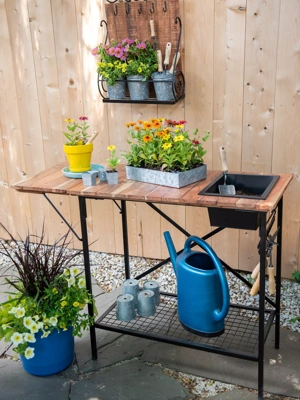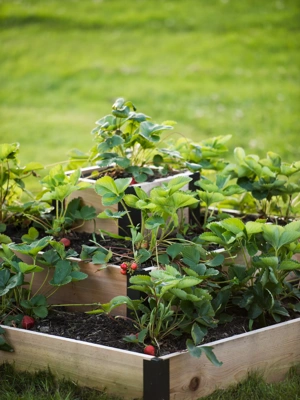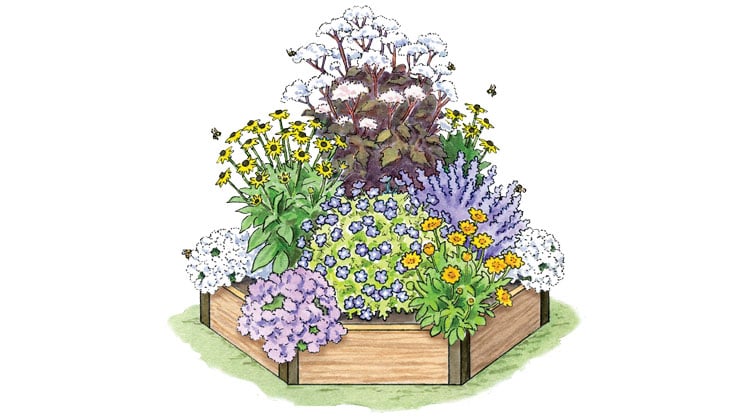Small Gardens with BIG Attitudes
Get a big impact in a small space with the right plants
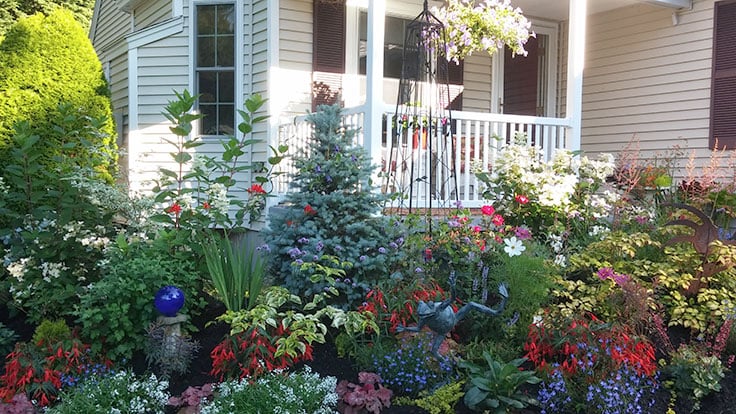
If you don't have a lot of space to garden, join the crowd! With a surge in millennials moving to urban settings and baby boomers downsizing to smaller homes, small gardens are the new BIG! Small gardens and urban nooks can generate a sense of awe similar to grander landscapes, yet they require much less maintenance and input (e.g., water, fertilizer, mulch). A cozy garden retreat offers the same, if not more, happiness, health, and relaxation.
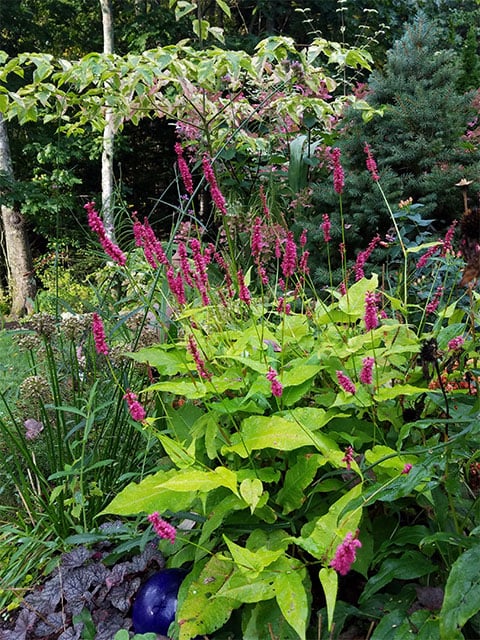
With smart plant picks you can create bigger-than-reality impressions that result in a masterpiece worthy of a garden magazine's cover shot.
Plants for All Seasons
Plants are the main ingredient in sensational, pollinator-friendly gardens. Since space is at a premium and the audience is close to the "stage," contenders must be extremely garden-worthy, look drop-dead gorgeous for three, if not four, seasons of the year without a lot of preening. Flowers, foliage, seed heads, berries, bark, and/or stem color are all under constant scrutiny.
Marathon-Blooming Perennials
Perennials continue to rise in popularity as gardeners rethink the time and cost of planting endless flats of annuals. But not all perennials are good choices for smaller-scale gardens. Only those that offer breathtaking flowers for six or more weeks of show-stopping color, with little or no deadheading, are suitable.
Note: When I use the word "native" it refers to a plant that is native to North America, or a cultivar (cultivated variety) of that native plant. Also, for perennials and woody plants, the numbers in parentheses — for example (4-7) — indicate hardiness zones.
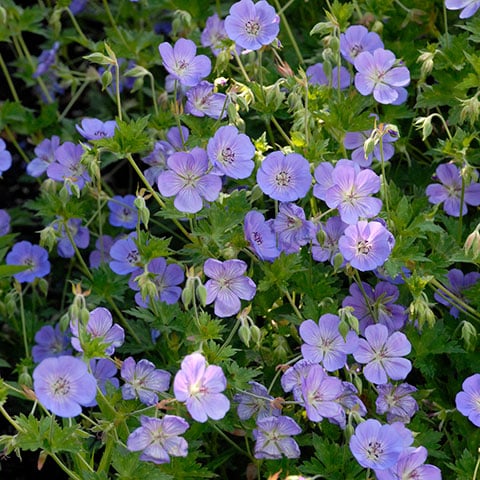
Tenacious standouts include:
- Geranium 'Rozanne' and 'Azure Rush' (5-8)
- Coreopsis 'Zagreb' (native) (4-9)
- Rudbeckia 'American Gold Rush' (native) (4-9)
- Persicaria 'Firetail' and 'Golden Arrow' (4-7)
- Agastache (4-9)
- Echinacea 'Cheyenne Spirit' (native) (4-9)
- Daylily 'Earlybird Cardinal' (3-9)
- Many Kniphofia cultivars including those in the Pyromania collection (5-9)
- Callirhoe involucrata (native) (4-9)
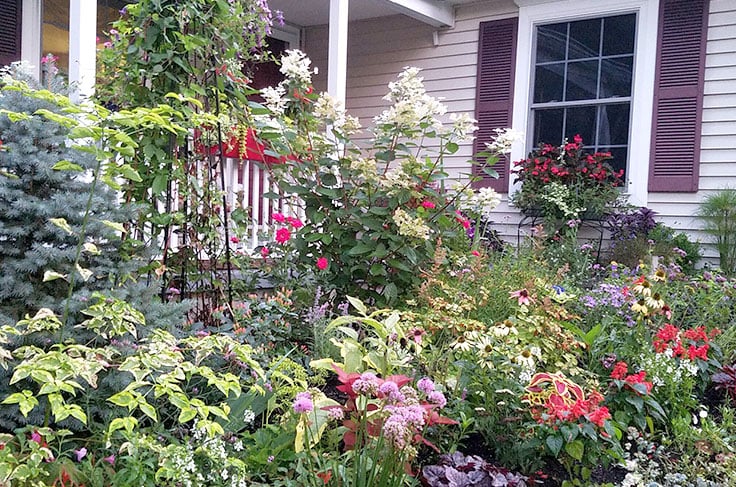
'Twofer Perennials'
These standouts raise the bar of excellence even higher for nonstop color with little maintenance. Between gorgeous flowers and striking foliage, there is never a dull moment.
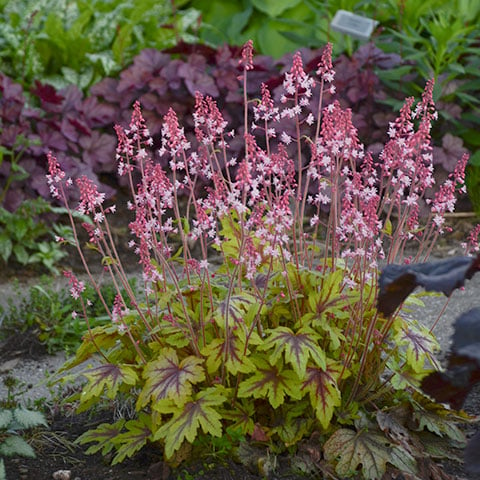
Traffic-stopping selections can be found among:
- Tiarella (foamflower) (4-9)
- Heucherella (foamy bells) (4-9)
- Heuchera (coral bell) (4-9)
- Sedum (3-9)
- Sempervivum (hen & chicks) (3-8)
- Hosta (3-9)
- Epimedium (barrenwort) (5-8)
- Euphorbia (cushion spurge) (4-9)
- Brunnera (Siberian bugloss) (3-8)
Awesome Annuals
Annuals suitable for gardens with precious little space must be at the top of their class. Plants will parade gorgeous blooms month after month, plus be drought-tolerant and self-cleaning (no deadheading required). Dazzling beauty is a given!
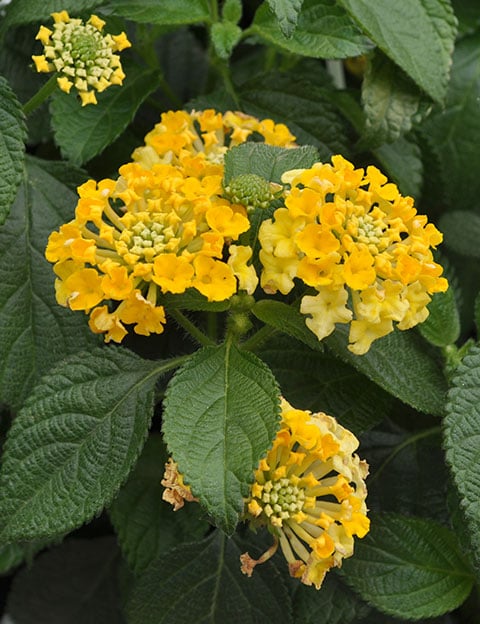
Sun-loving choices include:
- Lantana
- Alyssum 'Snow Princess'
- Cartharanthus (vinca)
- Isotoma 'Beth's Blue'
- Scaevola (fan flower)
- Bidens 'Goldilock's Rocks'
- Cuphea 'Vermillionaire'
- Bacopa
- Salvia
- Supertunia
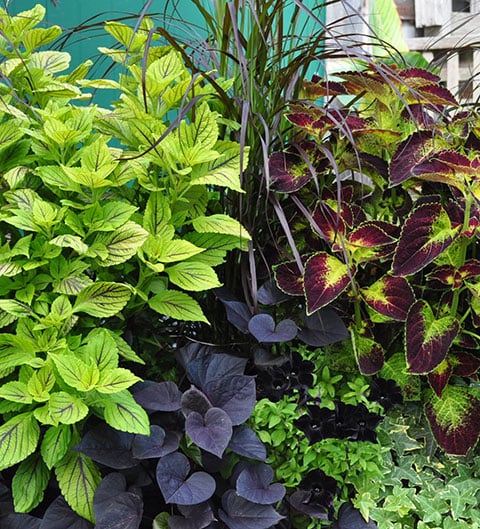
Shade standouts include:
- Browallia
- Torenia (wishbone flower)
- Coleus
- New Guinea Impatiens
- Various Begonias including Wax, Rieger, and those in the bolivensis and benariensis species
- Lobelia
Magnificent Flowering Shrubs
Captivating flowering shrubs, especially compact varieties that provide three to four seasons of interest between flowers, foliage, berries, dried flowers, bark, and/or intriguing shape, are quickly becoming low-maintenance gardener's best friends. Many of these champions are also ideal for growing in containers.
Terrific choices include:
- Dogwood (Cornus) 'Ivory Halo' (3-7)
- Bottlebrush (Fothergilla) 'Blue Shadow' and 'Blue Mist' (5-8)
- Harry Lauder's Walking Stick (Corylus) 'Red Dragon' (4-9)
- Redbud (Cercis) 'Ruby Falls' and 'Lavender' Twist' (5-9)
- Rhododendron mucronulatom (azalea) 'Cornell Pink' (4-7)
- Many Viburnums (2-9)
Rockstars That Make Quick Exits
Spring-blooming bulbs are sensational forerunners to a new gardening season. A dazzling display lifts one's spirits plus injects color into a landscape where most plants are just waking up. But not all bulbs are good choices for gardens where the audience is close to the stage, especially if ratty-looking foliage is front and center after flowers fade. This is where minor bulbs shine!
Although more petite in size (usually 10" or shorter), they still provide an enchanting display, plus the smaller leaves ripen and disappear far more quickly than taller varieties. Long-lived, deer-resistant choices include:
- Daffodil 'Tete-a-Tete' (fragrant)
- Species tulips
- Checkered lily (Fritillaria meleagris)
- Species crocus
- Snowdrops (Galanthus nivalis)
- Grecian windflower (Anemone blanda)
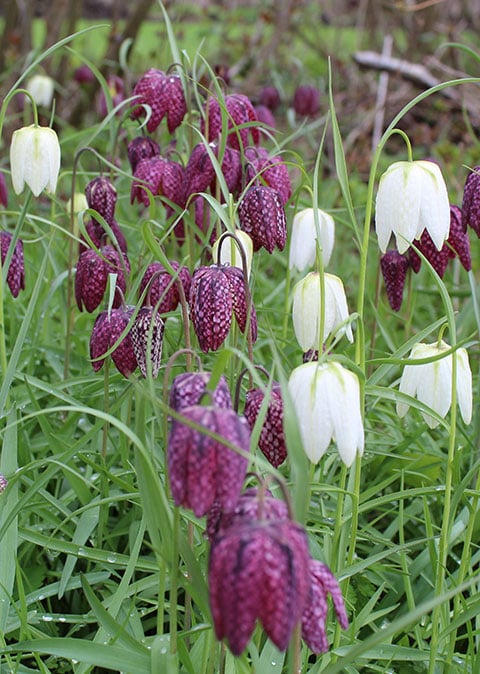
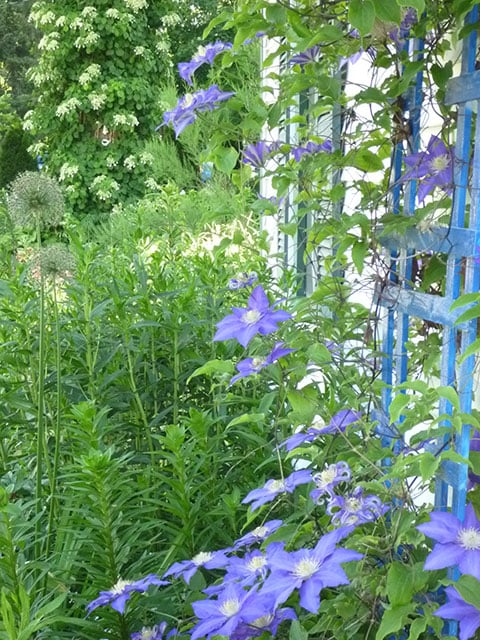
Going Up!
In spaces where every square foot is a precious commodity, gardening up is essential. Climbing vines direct the eye skyward, adding a third dimension of beauty and interest to a landscape. This is especially effective in small spaces — including patios, decks, and entranceways. Flowering vines also make wonderful wall "accessories," and privacy and shade screens, as well as cover-ups for eyesores. Fragrant vines deliver an added element of pleasure.
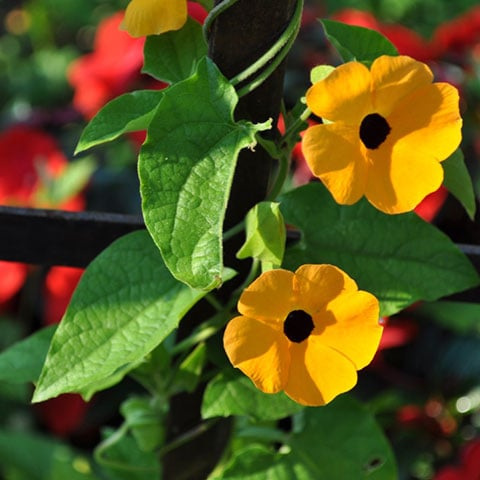
When selecting a climbing vine, it is important to know how it 'ascends' so you can provide the right kind of structural support. Some vines, such as clematis and black-eyed susan vine (Thunbergia), use tendrils — wiry, skinny structures that wrap around a structure. Because tendrils are short, the support should be less than 1/2" in diameter — twine, wire, fish line, narrow wooden slats or branches work well.
Other climbers such as Wisteria, Honeysuckle and Trumpet vine wrap their entire stems around a structure. Depending on the species and genetics, the stems can twine either clockwise or counterclockwise. Most flowering vines grow counterclockwise; about 10% grow clockwise. If your vine never successfully climbs a structure and just lies in a heap on the ground, perhaps you're training it in the wrong direction.
The mature size and weight of a vine will determine how hefty a supporting structure should be. Wisteria are notorious for toppling weak supports. (Note: Plant only non-invasive species of honeysuckle and wisteria.)
Some vines use aerial roots or disc-like adhesive pads to hook on to a support. Climbing Hydrangea and Japanese Hydrangea Vine (Schizophragma) fall into this category. These climb best on rough surfaces such as textured wood, bark or masonry. Finally, some vines don't actually 'climb' at all. They need a helping hand from us to head skyward. Climbing rose and Bougainvillea are examples. These have long stems that need to be tacked into place or tied with twine or string.
I hope these suggestions help transform what may at first appear to be a smaller space into a cherished gardener's paradise.
Last updated: 12/27/2022
Print this Article:
Related items
Related Articles
Get the Dirt
Stay up to date on new articles and advice. Please fill out the information below.



